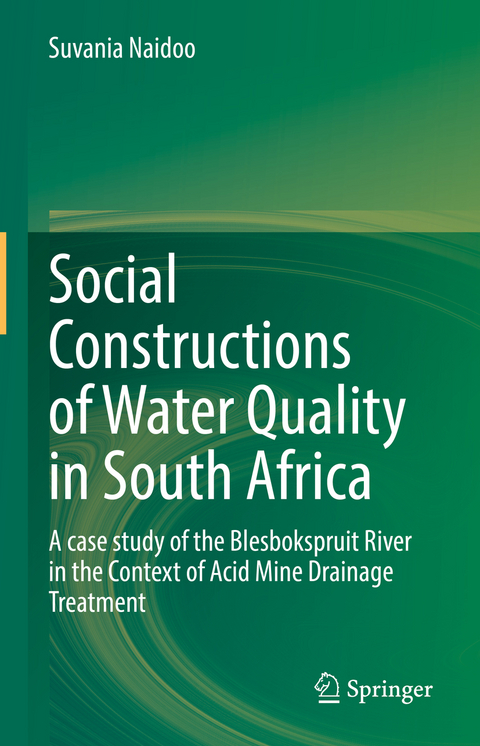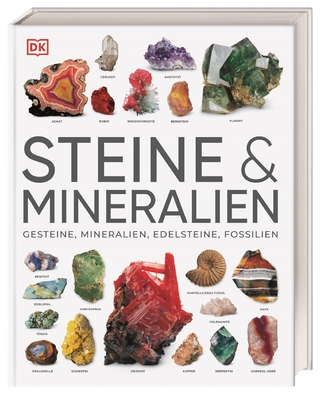
Social Constructions of Water Quality in South Africa
Springer International Publishing (Verlag)
978-3-030-98236-2 (ISBN)
This book details how the water quality of the Blesbokspruit River in Gauteng, South Africa was socially constructed by stakeholders and key individuals in the context of acid mine drainage (AMD) and its treatment. Social constructionism is used as the framing for this research to explain how water is intrinsically social. Findings presented here show that stakeholders are aware that the changes in the physicality of the Blesbokspruit resulted from human interventions and varied uses of the water over the years. Such knowledge, among factors such as the historical context of mining, current coal mining, flows and volumes of water, technology used and processes followed, information and communication, and vested interests influence social constructions of the water quality. What counts as the truth about water varies depending on the individual's perspective, their purpose, and their individual interests. Further, how one defines water quality influences what treatment processes arepreferred in order to improve water quality.
The book explains why, for example, a treatment process meant to improve water quality gained a bad reputation by the public because of the South African government's silo approach. The book explains how these social constructions are entrenched in power relations between stakeholders regarding AMD treatment and illustrates how power was used to influence decisions to improve the water quality of the Blesbokspruit. The case presented in this book offers insights and recommendations for policymakers working in water governance, including means to influence social constructions of water quality and ways to clarify roles and responsibilities in pursuit of improved cooperative government.
lt;p>Suvania Naidoo was born in Durban, South Africa. She is a senior lecturer and researcher at the University of South Africa. She graduated with her doctoral degree on 22 October 2021 from the University of Johannesburg. She began researching acid mine drainage and its socio-economic impact since 2011. She presented her research on Acid Mine Drainage at four international conferences: Hiroshima, Japan; Split, Croatia; London, UK and Milan, Italy. She first published with Springer in 2015, an article entitled "An assessment of the impacts of acid mine drainage on socio-economic development in the Witwatersrand: South Africa". In 2017, she launched her first book entitled "Acid mine drainage in South Africa: Development actors, policy implications and broader impacts". The book featured in Mining Weekly Magazine. In 2019, the book won her the Principal's Prize for Excellence in Research at the University of South Africa; awarded to candidates under the age of 35 years, whose research is internationally recognised and has made a significant impact in society. She was invited to speak at Sustainability Week 2017, an internationally recognised event to present the findings of her first book, among experts in the field. In 2019, she was invited to speak at the Water Show Africa and served as an Advisory Board Member in 2020. At this event she spoke on some of the findings of the research conducted for this book where she co-presented a workshop with officials from the national government Department of Water and Sanitation and the Trans-Caledon Tunnel Authority; those responsible for implementing acid mine drainage treatment in Gauteng, South Africa. She has been quoted in the South African media on the findings of this research.
Section1. Forest Conservation Ecology.- Chapter1. Introduction to Forest Resources in India: Conservation, Management, and Monitoring Perspectives.- Chapter2. Assessment of Carbon Sequestration using InVEST model in Delhi, India.- Chapter3. Assessments of Bio-physical characteristics of Vegetation cover in Western Part of Puruliya District in West Bengal.- Chapter4. Delineating the mangrove patches along coastal Kerala using Geographical Information System, satellite data and field validation.- Section2. Forest Conservation and Society.- Chapter5. Significance of Social Systems in Forest and Biodiversity Conservation: Experiences from JANGAL MAHALS of West Bengal, India.- Chapter6. 'Green placemaking' in Kolkata: Role of Urban Greens and Urban Forestry.- Chapter7. Forest Resource Scenario in Industrial Town: A Study of Asansol-Durgapur Region.- Chapter8. Floristic composition and inventorization of forest resources in some selected forest areas of Paschim Bardhaman district, West Bengal, India.- Section3. Forest Management.- Chapter9. Assessment of Forest cover change, community responses and conservation strategy: Evidence from North Sikkim district, India.- Chapter10. Carbon stock assessment in sub-humid tropical forest stands of the Eastern Himalayan foothills.- Chapter11. A People's Biodiversity Register of Henry's Island, Indian Sundarban.- Chapter12. Applications of Geospatial Technology on the Forest Management in Three Districts of North Bengal, India.- Section4. Forest Monitoring using GIS and Remote Sensing.- Chapter13. An assessment of the temporal changes in land cover and forest fragmentation using geospatial techniques: A case study from the Central Indian Highlands.- Chapter14. Analyzing the Trend, Pattern, and Hotspots of Forest Fires Using Geospatial Techniques: A Case Study of Almora District, India.- Chapter15. Approaches and methodologies on mapping vegetation cover and biodiversity status using remote sensing and spatial analysis: A systematic review.- Chapter16. Application of participatory rural appraisal and geospatial techniques for analyzing the dynamics of mangrove forest and dependent livelihood in Indian Sundarban.- Section5. Human-Wildlife Conflicts.- Chapter17. Changing landscape and escalating human-wildlife conflict: Introspection from a transboundary landscape.- Chapter18. Issues of Biodiversity Conservation and Conflict in Gorumara National Park, West Bengal, India.- Chapter19. Assessing potential Habitat suitability for Panthera tigris using multiple grain size and different ensemble methods in maximum entropy modeling.- Chapter20. Assessment of Prospective Check Dam Sites in Kaimur Wildlife Sanctuary, Bihar with Integrated Analytical Hierarchy Process and Geospatial Techniques.
| Erscheinungsdatum | 06.05.2022 |
|---|---|
| Zusatzinfo | XVIII, 219 p. 38 illus., 36 illus. in color. |
| Verlagsort | Cham |
| Sprache | englisch |
| Maße | 155 x 235 mm |
| Gewicht | 517 g |
| Themenwelt | Sachbuch/Ratgeber ► Natur / Technik ► Natur / Ökologie |
| Naturwissenschaften ► Geowissenschaften | |
| Schlagworte | Environmental remediation • Mine closure • Mine water contamination • Stakeholder perceptions • water scarcity • Water Treatment |
| ISBN-10 | 3-030-98236-X / 303098236X |
| ISBN-13 | 978-3-030-98236-2 / 9783030982362 |
| Zustand | Neuware |
| Haben Sie eine Frage zum Produkt? |
aus dem Bereich


